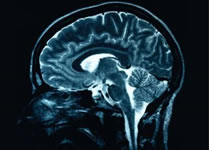Addiction is a chronic disease of brain reward, motivation, memory, and related functions that lead to characteristic biological, psychological, social, and spiritual manifestations. This is subsequently reflected in the pursuit of reward and/or relief through substance use and other behaviors.
The video below provides a simple but thought-provoking understanding of substance use disorders:
Medications for Addiction Treatment (MAT) are the use of medications in combination with counseling and other behavioral interventions to comprehensively address substance use disorders such as alcohol and opioid use disorders.
There are a number of FDA-approved medications for the treatment of Opioid Use Disorders (OUD) and Alcohol Use Disorders (AUD)
Opioid Use Disorder Treatment
- Methadone
- Buprenorphine (aka: Suboxone = buprenorphine + naloxone)
- Naltrexone (oral & long-acting injectable)
- *Naloxone (used for overdose prevention, not maintenance treatment)
Alcohol Use Disorder Treatment
- Naltrexone (oral & long-acting injectable)
- Disulfiram (Antabuse)
- Acamprosate
There are no FDA-approved medications for the treatment of stimulants or other substance use disorders. However, some medications are used off-label to treat SUDs, such as gabapentin, topiramate, clonidine, and carbamazepine.
Given that substance use disorders (SUD) are complex, biopsychosocial conditions with biomedical, psychological, and social origins, it is important to address these complex conditions from various angles. Like other chronic conditions such as diabetes and high blood pressure, treating SUDs requires a comprehensive approach comprised of both behavioral interventions and medications. Research has consistently demonstrated that a combination of medication and behavioral therapies is more effective than either intervention alone.
MAT offers an additional tool health providers can use to address SUDs from a biomedical perspective. MAT addresses some of the physical manifestations of addiction by reducing cravings, reducing uncomfortable withdrawal symptoms that often lead to relapse, and increasing the likelihood that someone will stay in treatment. In other words, medications can stabilize brain reward pathways involved in SUDs and loosen the unnatural physical grip drugs have on the brain. This helps psychosocial interventions and the natural recovery process to work.
Considering how challenging addiction is to treat, using all the treatment tools providers have at their disposal is important. MAT has been shown to improve SUD treatment outcomes by as much as 20 – 30%. By using MAT in conjunction with other interventions that address the psychological (e.g., underlying mental health conditions) and social origins (e.g., relationships, peer and living environment) of SUDs, providers can ensure they are doing everything they can to help their patients by taking a comprehensive, biopsychosocial approach to addressing the complicated condition of addiction.
 Research has repeatedly shown that MAT improves the percentage of people who sustain their recovery (Roman, Abraham, & Knudsen, 2011) by up to 20 – 30%. Because MAT has been shown to reduce cravings and ease the symptoms of withdrawal from drugs such as alcohol and opioids, patients who receive MAT have been shown to stay in treatment longer, which is a key indicator of achieving long-term recovery. In short, MAT helps to improve outcomes for the treatment of substance use disorders.
Research has repeatedly shown that MAT improves the percentage of people who sustain their recovery (Roman, Abraham, & Knudsen, 2011) by up to 20 – 30%. Because MAT has been shown to reduce cravings and ease the symptoms of withdrawal from drugs such as alcohol and opioids, patients who receive MAT have been shown to stay in treatment longer, which is a key indicator of achieving long-term recovery. In short, MAT helps to improve outcomes for the treatment of substance use disorders.
 Despite research demonstrating its effectiveness, less than half of the 2.5 million Americans aged 12 or older who abuse or are dependent on opioids receive MAT (Volkow, Frieden, Hyde, & Cha, 2014). However, as more providers become aware of MAT and accept it as an evidence-based practice, its use in substance use disorder treatment, physical health, and mental health programs is increasing.
Despite research demonstrating its effectiveness, less than half of the 2.5 million Americans aged 12 or older who abuse or are dependent on opioids receive MAT (Volkow, Frieden, Hyde, & Cha, 2014). However, as more providers become aware of MAT and accept it as an evidence-based practice, its use in substance use disorder treatment, physical health, and mental health programs is increasing.
In addition to the scientific evidence, personal experiences have also demonstrated the potential impact of MAT in transforming the lives of those struggling with substance use disorders. See the videos below for some compelling personal accounts of experiences with methadone, buprenorphine, and naltrexone.
MAT Testimonials
Medications for Addiction Treatment: Overview – Naltrexone, Methadone, & Suboxone
Anti-Addiction Pill, Naltrexone - CNN
Despite the significant evidence base supporting its use, MAT remains a largely untapped resource in substance use disorder (SUD) treatment. There are a number of reasons why MAT is under-utilized, and these vary by setting and region. A few are highlighted below:
- Misunderstanding and Stigma – Misunderstandings about MAT have led some in the general public and health community to think of MAT as replacing one drug with another. Some have focused on the potential risks rather than the potential benefits, particularly compared to other medications.
- Replacing One Drug with Another
Similar to other chronic conditions, such as type I diabetes that requires replacement insulin, or inherited metabolic conditions that require the replacement of certain enzymes the body needs to function properly, SUDs at times require replacement of opioid receptor binding medications to facilitate the recovery process. In these instances, studies have repeatedly shown that the recovery benefits of these medications outweigh their potential risks, when used and monitored appropriately. Health providers do not question the need for insulin in type I diabetes or the need for supplemental enzymes for inherited metabolic conditions. Likewise, MAT should be offered to patients that might benefit. - Risk and Benefit Analyses
 Despite the fact that all medications have potential risks, including commonly prescribe antibiotics and opioid pain medications, the potential adverse consequences of MAT are often cited as key reasons why it is not considered as a treatment option. While risks are certainly important to consider when making treatment decisions, potential benefits must be considered as well. The disproportional stigma associated with MAT compared to other FDA-approved medications oftentimes contributes to its under-utilization. A balanced perspective of the risks and benefits of MAT is important for both health providers and patients.
Despite the fact that all medications have potential risks, including commonly prescribe antibiotics and opioid pain medications, the potential adverse consequences of MAT are often cited as key reasons why it is not considered as a treatment option. While risks are certainly important to consider when making treatment decisions, potential benefits must be considered as well. The disproportional stigma associated with MAT compared to other FDA-approved medications oftentimes contributes to its under-utilization. A balanced perspective of the risks and benefits of MAT is important for both health providers and patients. - Perspective – Some of the rationale for resisting MAT has originated from the SUD community itself, as some have reasoned that because people have recovered from SUDs in the past without medications, everyone should be able to achieve recovery from their addictions without the aid of medications.
- The Power (and Crutch) of Personal/Lived Experience, and the Importance of Perspective
Prior personal/lived experience is powerful and can be a helpful treatment tool for providers because it allows them to connect with clients in unique ways. However, personal/lived experience can also be limiting if it is used as one’s primary treatment perspective, and if it is the sole perspective used to guide treatment planning. Our treatment approaches should be responsive to everyone’s recovery journey. If we only base treatment decisions on our past personal experience, we will overlook opportunities to benefit from new approaches and advances in the field, such as MAT.
recovery journey. If we only base treatment decisions on our past personal experience, we will overlook opportunities to benefit from new approaches and advances in the field, such as MAT. - In summary, perspective is critical to the delivery of patient-centered services. It is important for health providers to understand how their personal experiences, biases, and perspectives influence treatment recommendations and how they speak with patients about their treatment.
- Prescribers – One of the clear barriers to expanding the availability of MAT is the shortage of addiction specialists and MAT prescribers. While most MAT do not require any special certification or training prior to prescribing, buprenorphine does require that prescribers obtain training and a X-number from the Drug Enforcement Agency (DEA). Methadone prescriptions for the treatment of addiction (as opposed to pain) must be prescribed by physicians from Opioid Treatment Program (OTP) settings (aka: methadone clinics).
- Generally, the number of MAT prescribers is self-limited in that if more prescribers wanted to become competent MAT prescribers, they could.
- Lack of Resources and Interest
Some of the reservations about becoming a MAT prescriber relate to the fact that SUDs have traditionally been underrepresented and underfunded components of health systems. However, the addiction field is increasingly recognized as a core component of health. Addiction medicine is now an officially recognized medical subspecialty by the American Board of Medical Specialties, and states are infusing more resources into specialty SUD systems. - There is also a growing recognition that achieving the Institute for Healthcare Improvement's Triple Aim will not be possible without better addressing SUDs. Well over 20 million people have SUDs in the United States but only about 1 in 10 these individuals receive treatment. Addiction treatment, including MAT, is a rapidly rising health priority across the country. This fact is highlighted by the much-publicized opioid epidemic and the expansion of buprenorphine prescribing privileges to nurse practitioners and physician assistants in 2017.
- As is the case in other areas of healthcare, resources and interest are generally followed by changes in workforce to meet the growing demands of those new resources and interest. The addiction workforce, including MAT prescribers, is anticipated to follow this trend.
- Attracting Challenging Patients
An additional reason often given for being reluctant to become a MAT prescriber is that SUD patients can be challenging to treat. There are sometimes fears that offering MAT will attract more challenging patients. However, the reality is that most health providers are already treating individuals with SUDs, even if they don’t know it. Unaddressed SUDs can contribute to negative outcomes for both providers and patients. - Additionally, as health providers increasingly experience burn out from their growing responsibilities, one of the best equalizers of burn out is professional fulfillment. Given the significant opportunity for improvement in better addressing SUDs in health systems, even seemingly small interventions can yield rewarding outcomes and interactions with patients with SUDs. Providers realize that the fruits of recovery are often felt not just in improved behavioral health outcomes, but in improved physical health outcomes as well. Individuals with better-controlled addictions are better able to manage their other health needs.


One of the goals of this MAT Resource Library website is to give health providers the knowledge, practical tools, and support they need to establish high-quality MAT services.

Since the duration, frequency, and intensity of substance use in youth tend to be less than that of their adult counterparts given the number of years exposed to substances, youth tend to exhibit less severe substance use disorders (SUD). As a result, youth generally do not require MAT. However, the needs assessment for MAT should be an individualized clinical decision, and there are certainly circumstances where MAT is necessary and appropriate for youth.
The only MAT that are FDA-approved for the maintenance treatment of SUDs in youth under age 18 are methadone and buprenorphine, in very specific cases. However, naloxone should be used in cases of opioid overdose, and other MAT should also be considered based on the clinical judgment of qualified prescribers.
In summary, starting MAT in youth should be a treatment option, depending on clinical need, and should be carefully considered by qualified health professionals.
References and Resources
- NIDA's Principles of Adolescent SUD Treatment: A Research-Based Guide lists some references
- American Academy of Pediatrics: Medication-Assisted Treatment of Adolescents With Opioid Use Disorders
- Trends in Receipt of Buprenorphine and Naltrexone for Opioid Use Disorder Among Adolescents and Young Adults, 2001-2014
This section includes links to websites, documents, presentations, trainings, webinars, and implementation support that may be useful when establishing a MAT program.
As use of MAT expands, the number of useful guides, tips and resources has also expanded. Included below are selected materials developed and/or published by reputable entities that review important practice guidelines, certification and waiver regulations and procedures, the science and research behind both addiction and treatment, medication safety, training requirements and courses for medical and non-medical providers, patient education provisions, and clinical supports and mentorship for prescribers.
Helpful Resources/Websites
- SAMHSA Medications for Addiction Treatment Resources
- National Institute on Drug Abuse (NIDA): Medications to Treat Opioid Addiction, May 2017
- Medication for the Treatment of Alcohol Use Disorders: A Brief Guide
- MAT Resources for Opioid Use Disorders
- SAMHSA TIP 63: Medications for Opioid Use

Helpful Presentations
- Medications for Addiction Treatment in Integrated Care Settings
- Everything You Wanted to Know about MAT (But Were Afraid to Ask)
- Opioid Dependence 101 and Medications for Addiction Treatment
Helpful Webinars, Trainings, Clinical and Technological Supports

- MAT Webinars
- Vivitrol 101: An Introduction to Long Acting Injectable Naltrexone, Desiree Crevecoeur-MacPhail, PhD
- Medications for Addiction Treatment in Community Corrections Settings
- SAMHSA: Information on Buprenorphine
Clinical and Technological Supports
- UCSF Clinician Consultation Center for Substance Use
Substance use warmline: 855-300-3595 - Providers' Clinical Support System for MAT (PCSS-MAT)
National training and mentorship project to give prescribers the tools to be able to prescribe MAT - CDC Opioid Guideline Mobile App